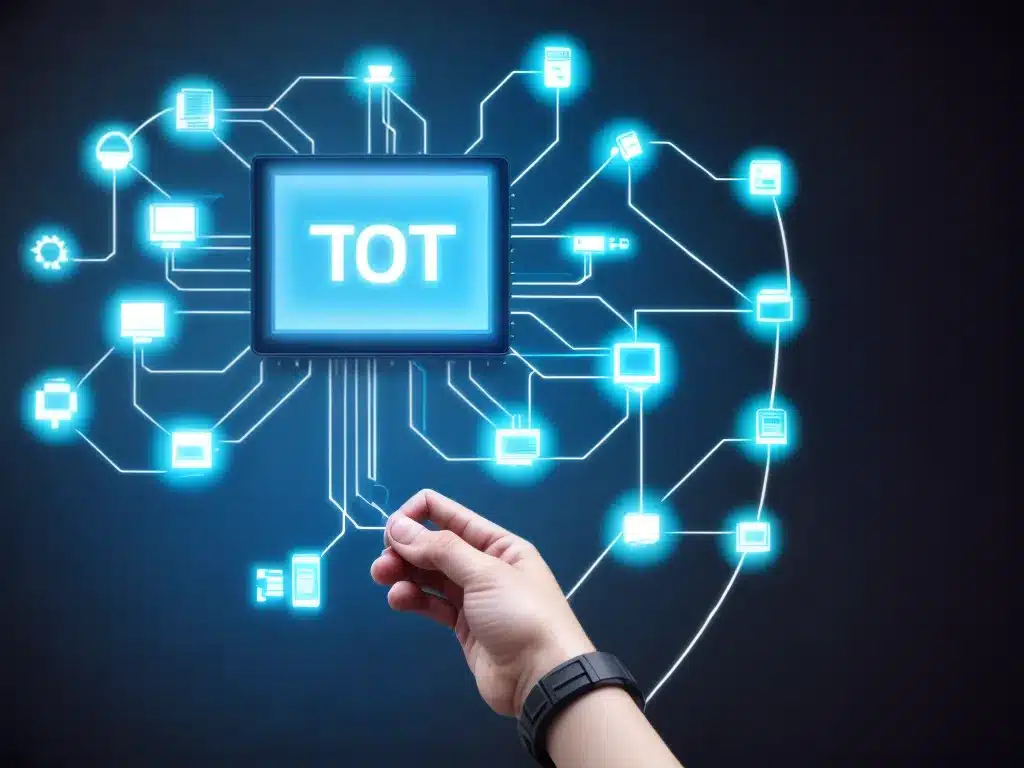
IoT for Beginners: An Introduction for New Users
What is the Internet of Things (IoT)?
The Internet of Things (IoT) refers to the network of physical objects that are embedded with sensors, software, and other technologies to connect and exchange data over the internet. Essentially, it allows devices to be connected to each other and to the internet. This connectivity enables devices to communicate and share data, creating opportunities for more direct integration of the physical world into computer systems.
Some examples of IoT devices include:
- Smart home devices like smart thermostats, security cameras, and smart appliances
- Wearables like smartwatches and fitness trackers
- Industrial internet sensors and machinery
- Self-driving cars and transportation systems
- Smart cities infrastructure like traffic lights and water monitoring systems
The key components of an IoT system include:
- Sensors/Devices – Collect data and communicate it over networks
- Connectivity – Enable devices to connect to networks (WiFi, Bluetooth, LPWANs)
- Data Processing – Software to analyze and understand IoT device data
- User Interface – Dashboards to visualize insights from device data
Why is IoT Useful?
There are many potential benefits and use cases of the IoT across industries and sectors:
-
Efficiency – IoT enables more efficient asset utilization, process optimization, and automation. For example, in manufacturing, IoT sensors can detect errors and failures early to improve uptime.
-
Analytics – IoT generates massive amounts of data which can be analyzed to gain insights and make better decisions. For instance, smart meters provide detailed energy usage data to improve utility services.
-
Autonomy – IoT devices can operate autonomously, interacting with each other and their environment. Self-driving cars are an example of this autonomous functionality.
-
Prediction – Based on sensor data, IoT applications can detect patterns and generate predictions about future events and behaviors. Predictive maintenance uses this to forecast equipment failure.
-
Safety and Security – IoT devices can help monitor and track assets, people, and environments to improve safety and security. Asset tracking and access control systems rely on this.
How Does IoT Work?
An IoT ecosystem essentially has 3 main components: devices/sensors, connectivity, and a software application. Here is how IoT devices work together to deliver value:
-
The IoT device collects data from its environment through sensors and communicates it over a network. For example, a smart thermostat measures temperature and detects motion.
-
The device uses connectivity like WiFi, cellular, or another wireless protocol to connect to the internet or a private network. This allows remote access to the device.
-
The data from the device is received by an IoT application which might be processed locally or in the cloud. Software analyzes data to derive insights.
-
The application then performs actions based on the insights. It may control or automate the IoT device itself, or interface with other systems. For instance, the thermostat data could be used to adjust heating automatically.
-
Data from the IoT system can be visualized on dashboards to monitor device status and metrics in real-time. Users can also control devices through interactive apps.
Challenges and Risks of IoT
While promising many benefits, IoT ecosystems also come with some key challenges and risks:
-
Security – With more devices connected, there are more vulnerabilities that can be exploited by hackers. IoT systems have to be designed with security in mind.
-
Privacy – The large amount of data collected by IoT devices increases privacy risks if not handled properly. Consent and controls around data usage are necessary.
-
Interoperability – With many vendors, there is a lack of common standards and compatibility between IoT platforms. This makes integration complex.
-
Complexity – IoT systems have many components from hardware, connectivity to the cloud. Managing this complexity is difficult. Regular maintenance is required.
-
Power consumption – Many IoT devices are battery-powered. Energy efficient hardware and software design is needed to maximize battery life.
Getting Started with IoT
Here are some steps to start exploring and implementing an IoT system as a beginner:
-
Learn about the basic building blocks of an IoT ecosystem – devices, connectivity, cloud, dashboard, etc. Take online courses on IoT fundamentals.
-
Experiment with simple devices like Arduino boards or Raspberry Pi kits. Set up and connect sample devices to get hands-on experience.
-
Identify a problem to solve or use case for IoT in your office, home or daily life. Focus on addressing real needs.
-
Start with MVP (minimum viable product) implementations with 1 or 2 devices, avoid over-engineering initially. Iterate based on learnings.
-
Evaluate IoT platforms like AWS IoT, Azure IoT, ThingSpeak, Ubidots. Choose one to handle your connectivity, processing and visualization needs.
-
Address security, privacy, manageability and scalability considerations from the beginning. Plan for the long term.
-
Leverage cloud services as much as possible to reduce costs, time and effort. Cloud platforms provide robust IoT capabilities.
-
Partner with IoT developers and solution providers if required to complement your skills and accelerate projects.
In summary, take steady and incremental steps to launch your first IoT project. Learn from initial implementations and expand in scope over time. The world of IoT offers unlimited possibilities for innovation!












